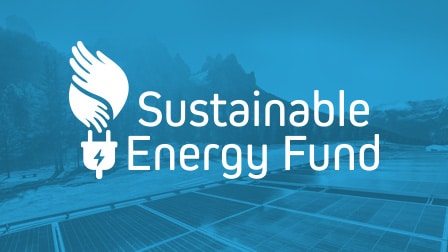FOR IMMEDIATE RELEASE Sustainable Energy Fund Contact: Katrina LaubachMarketing [email protected] Family Promise Contact: Cathy LammExecutive [email protected] Sustainable...
» Read MoreThe Inflation Reduction Act: Part 2
Introduction:
This post aims to introduce the production and investment tax credits covered in The Inflation Reduction Act. Guidance is still unreleased for several portions of the IRA and as such, information is subject to change. Sustainable Energy Fund is not an accounting agency. Please check with your accountant to verify the tax consequences.
Renewable Electricity Production Tax Credit
The previous production tax credit for renewable electricity generating facilities was modified to now have a base credit value of 0.3 cents per kilowatt hour of electricity produced. The projects eligible for this credit include solar, wind, biomass, geothermal, and hydropower technologies to name a few. The credit will continue for 10 years after the facility is placed in service. This base credit is multiplied by 5 for projects under 1 MW of alternating current output or if they meet the prevailing wage and apprenticeship requirements. This would raise the credit value to 1.5 cents per kilowatt hour of electricity produced. Projects sited in energy communities can qualify for an increase in the production tax credit by 10%. A 10% increase may also be obtainable by meeting domestic content requirements. This tax credit will become technology neutral in 2025 and will include any electricity generating facilities with zero greenhouse gas emissions.
Other Production-Based Tax Credits
Production (or capture) tax credits have also been either created or modified for the sequestration of carbon dioxide, production of clean hydrogen, production of clean fuels, and the domestic production of clean energy components and materials. In the case of carbon dioxide sequestration, certain direct air carbon capture facilities can qualify for a maximum credit of $180 per metric ton of carbon dioxide sequestered. The production of hydrogen can also now earn a substantial production tax credit. For qualified facilities, up to a $3.00 credit per kg of hydrogen produced can be obtained. The production tax credit is only one structure of incentives utilized in the IRA. Several other structures are identified and may be better suited to different project types.
Energy Property Investment Tax Credit
The investment tax credit could offer a better incentive for projects that may be more capital intensive and result in less output. The IRA modified and expanded the existing investment tax credit to include new technologies such as stand-alone energy storage, microgrid controllers, and combined heat and power. The base credit was also modified to be 6%. This credit is multiplied by 5 (to a value of 30%) for projects under 1 MW or those conforming to the prevailing wage and apprenticeship requirements. Additional increases of 10 percentage points each can be obtained for projects sited in energy communities or those utilizing the required percentage of domestic content.
Conclusion:For more information on how we can help with your commercial energy project, please do not hesitate to send us an email at [email protected] or call our office at 610-264-4440. Check back soon to hear more about The Inflation Reduction Act and other sustainability news.







